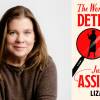In 1984, when Jeanette Kuvin Oren was an epidemiology Ph.D. student at Yale University and preparing for her wedding, the university rabbi had a suggestion: Since Oren already pursued art as a hobby, would she be open to making her own ketubah? She said yes, and her life changed. But it wasn’t only because of the marriage.
“I made ours and then people asked me to make their ketubah for their Jewish wedding,” Oren recalled. “One thing led to another, and I called my parents and said, ‘Guess what? I'm quitting my Ph.D.’ I'm going to be a full time Judaic artist.” Oren, who lives in Woodbridge, Connecticut, has been a full-time artist for 38 years, and now, the public is seeing the result of yet another commission: the USPS Hanukkah Forever stamp.
“While it had always been a dream of mine to have my art on a stamp, there isn't much you can do to make it happen either," Oren said. In the world of these commissions, you don’t find the stamp. The stamp finds you.
Oren's assignment for the 2022 stamp started two years ago. And according to Ethel Kessler, one of four contracted USPS art directors, that’s actually pretty fast. Oren’s is the sixth Hanukkah stamp that Kessler has overseen, and she’s been art directing for the USPS for 25 years.
The directors act as artistic scouts, looking at art recommended to them while keeping certain themes or assignments in mind. Then, Kessler explained, after the artist has been contacted and contracted, the design proceeds to a committee for approval — which only meets four times a year. Then, after the artist produces a final version of their work, the director scales it down to the size of a stamp. Only then does it go to production. The Hanukkah stamp changes every other year; the stamp design for 2024 has already been approved.
“Three years is usually the minimum,” Kessler said. But Oren’s was finished in two. “This one just kind of hit all the milestones right when we needed them.”

Kessler discovered Oren by coming across one of Oren’s wall hangings, a depiction of a seven branch menorah, which Oren also turned into glass ark doors for Temple Shalom in Medford. Kessler believed that a Hanukkah menorah — with its nine branches — could be done in the same style for the stamp.
The commission, Oren said, couldn't have come at a better time. “In the height of the pandemic, when I was really thinking, ‘Am I ever going to be commissioned again?’ I got a phone call from Ethel Kessler and she said, ‘We love your art. Can you adapt one of your designs and make it into a Hanukkah design?’ The only requirement: she couldn't tell anyone.
Oren notes the significant emotional weight that came with this commission, a stamp that will also hang in the National Postal Museum in Washington, D.C. Several of her family members were killed during the Holocaust, but her grandfather made it to the United States. In the 1940s he began collecting stamps. “I knew of his collection, and I loved that he loved the art on stamps,” she remembered. Oren says that her grandfather tried to get her to collect stamps but that it didn't really catch on. Then when she was older, her grandfather's stamp collection was stolen. "He was heartbroken over that. It was such a connection to the United States.” Now, years later, it’s her own art being featured on a stamp. “It’s a really nice way to remember him and his stamp collection,” she said.
Reflecting on the notable rise of antisemetism in the U.S.,Oren explained her belief that a form of combating that hate is to meet it with an even more pronounced embrace of her culture. “The only thing I can do, other than publicly fight for leaders that speak out against antisemitism, which I do, is to celebrate the joy of Judaism,” she explained. “And the postage stamp is a unique opportunity to share that joy with all of America and not just the Jewish community. So it's really been a great honor.”








